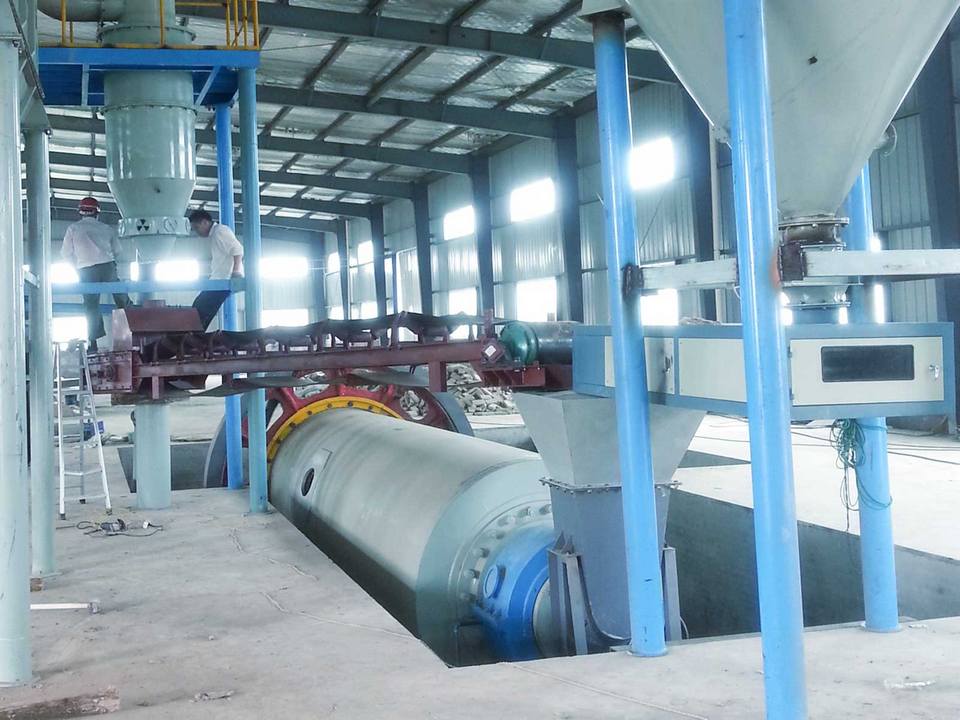What are the factors that affect the output and quality of the ball mill?
The beneficiation stage is mainly divided into three stages: pre-selection, separation and post-selection. Grinding is in the pre-selection stage. Therefore, the output of the ball mill has a certain degree of influence on the mineral separation effect, and even the recovery rate and concentrate grade. Therefore, how to ensure the output of the ball mill has become a topic of concern, so what are the reasons that affect the output of the ball mill?

- Raw material size
The particle size of the raw material affects the output and quality of the ball mill. If the particle size is small, the output and quality of the ball mill will be high, and the power consumption will be low; if the particle size is large, the output and quality of the mill will be low, and the power consumption will be high.
- Material ease of grinding
The grindability of the material refers to the degree of difficulty of the material in the grinding process. According to the national standard, the grindability index wi (kWh / T) is adopted. The smaller the value, the better the grind, otherwise the harder it is to grind.
- The water content of the material to be ground
The grinding of the ball mill can be divided into two methods: dry and wet. For dry milling, the water content of the abrasive has a great influence on the output and quality of the mill. The higher the water content of the abrasive material, the more likely it is to cause full grinding or paste grinding, reducing the grinding efficiency, and the lower the output of the grinding machine. Therefore, materials with higher moisture must be dried before grinding.
- Feed temperature
If the temperature of the material entering the mill is too high, the impact friction of the grinding body will be generated. If the temperature in the mill is too high, the ball will stick, which will reduce the grinding efficiency of the mill and affect the output of the mill. At the same time, the thermal expansion of the rolling mill barrel affects the long-term safe operation of the rolling mill. Therefore, it is necessary to strictly control the temperature of the material being ground.
- The fineness requirements of the grinding material
The finer the requirements for fineness, the lower the output, and vice versa, the higher the output. In some areas, excessive emphasis on fineness does not meet the requirements of economic production. For example, in the cement industry, actual production shows that when the product fineness is in the range of 5-10%, the fineness is reduced by 2%, and the output will be reduced by 5%. When the fineness is controlled below 5%, the output of the mill will decrease even more. Therefore, choosing the right product fineness is also an important factor to improve the output and quality of the ball mill.
- Grinding process
For ball mills of the same specifications, the closed-circuit process can increase the output by 15-20% compared with the open-circuit process; in closed-circuit operation, selecting the appropriate separation efficiency and cycle load rate is an important factor in increasing the output of the mill.
- Powder selection efficiency
The sorting efficiency of the closed-circuit crusher has a great influence on the output of the crusher. Generally speaking, the efficiency of the classifier is higher, which can improve the grinding efficiency of the mill. However, the classifier itself cannot play the role of grinding, so the function of the classifier must be combined with the grinding function of the grinder to increase the output of the grinder. Production practice shows that the efficiency of the one-stage closed-circuit long grinding separator is generally controlled at 50 ~ 80%. The ideal separation efficiency should be determined through multiple experiments.
- Cycle load rate
Circulation load rate refers to the ratio of recycled powder (coarse powder) to finished product. In order to improve the grinding efficiency of the mill and reduce the phenomenon of over-grinding in the mill, the cycle load rate should be appropriately increased. However, if the circulating load rate is increased to a very high level, there will be too much material in the mill, thereby reducing the grinding efficiency.
- Add grinding aid
Some grinding aids will affect the grinding effect, because most of the organic substances of commonly used grinding aids have strong surface activity, which can accelerate the crack propagation of the material and reduce the amount of fine powder during the grinding process of the adsorbed material on the surface of the material. The mutual combination between the two improves the grinding efficiency, which is conducive to the energy-saving and high-yield of the ball mill.
- Ball to material ratio
The ball-to-material ratio is the ratio of the mass of the grinding body to the mass of the material. If the ball-to-battery ratio is too large, it will increase the useless work loss of the impact friction between the grinding body and the liner, increase power consumption and reduce output. How to choose the ball-to-battery ratio and ball-to-battery ratio of the ball mill is a common problem in actual production.
In addition to process factors, the model, parameters, and the work of production and maintenance personnel also affect the production and quality of the ball mill. The energy-saving and high-yield ball mill is a systematic project, and each link is interrelated and restricts each other. Only comprehensive consideration and close cooperation can achieve better energy-saving and high-yield effects.
